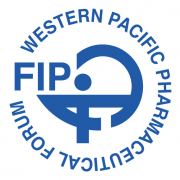DISPENSING MEDICATION: It’s about the people’s safety – See more at: http://www.mps.org.my/newsmaster.cfm?&menuid=36&action=news#sthash.wFrtIhTE.dpuf
2 Aug, 2014
reference: http://www.mps.org.my/newsmaster.cfm?&menuid=36&action=view&retrieveid=3923
I THINK the writer of “Consider higher costs and inconvenience” (NST, July 28) missed a lot of points discussed in my initial letter, “Separation of roles vital to prevent mishaps” (NST, July 11).
I had highlighted two issues that had always been brought forward by private medical practitioners who shun the idea of having dispensing separation.
For the last five decades, the same arguments have been played and we are getting nowhere, until now.
In any health professional training and practice, patients are the centre of care and there is no doubt about that.
All healthcare professionals are taught the Hippocrates oath of “First do no harm”, where it shows that patients should not be harmed, not only because of malpractice, but also issues related to equity of healthcare access.
The main idea of a dispensing separation system is to boost the safety of medication for the public.
From my observations and experiences as a patient, the dispensing in private primary clinics is, 99 per cent of the time, done by high school leavers who do not have adequate training.
If the patients have any doubt about their medications, no professional counselling is available to them.
Once, I was mistakenly given anti-diabetes drugs instead of antihistamines (the tablets looked similar in shape and colour) and told to take them three times a day. Is this quality and safe dispensing?
The increase of cost due to separation does not make any sense. A study published in a reputable journal, Plos Medicine, in 2007, showed that general practitioners mark up medicine prices more compared with pharmacists and this clearly shows that higher cost is due to the business inducement factor.
As for the unavailability of pharmacies, this again is not a big issue.
The majority of pharmacists, including those in big chain groups, are awaiting the announcement of the separation of dispensing
when more pharmacies will be opened as there is need for their services.
Besides, mapping studies conducted by the Malaysian Pharmaceutical Society in cities showed that the distances between pharmacies and GP clinics are not far, so this is not an issue.
The writer also mentioned separating the costs for consultation and medicines, but does he have any data to show how many clinics provide itemised billing?
Even with an itemised bill, medicines are charged in one lump sum, without the breakdown for each medicine given.
Associate Professor Dr Mohamed Azmi Ahmad Hassali, deputy dean (student affairs and detworking). School of Pharmaceutical Sciences, Universiti Sains Malaysia, Penang
– See more at: http://www.mps.org.my/newsmaster.cfm?&menuid=36&action=view&retrieveid=3923#sthash.k4rC7K6u.dpuf
